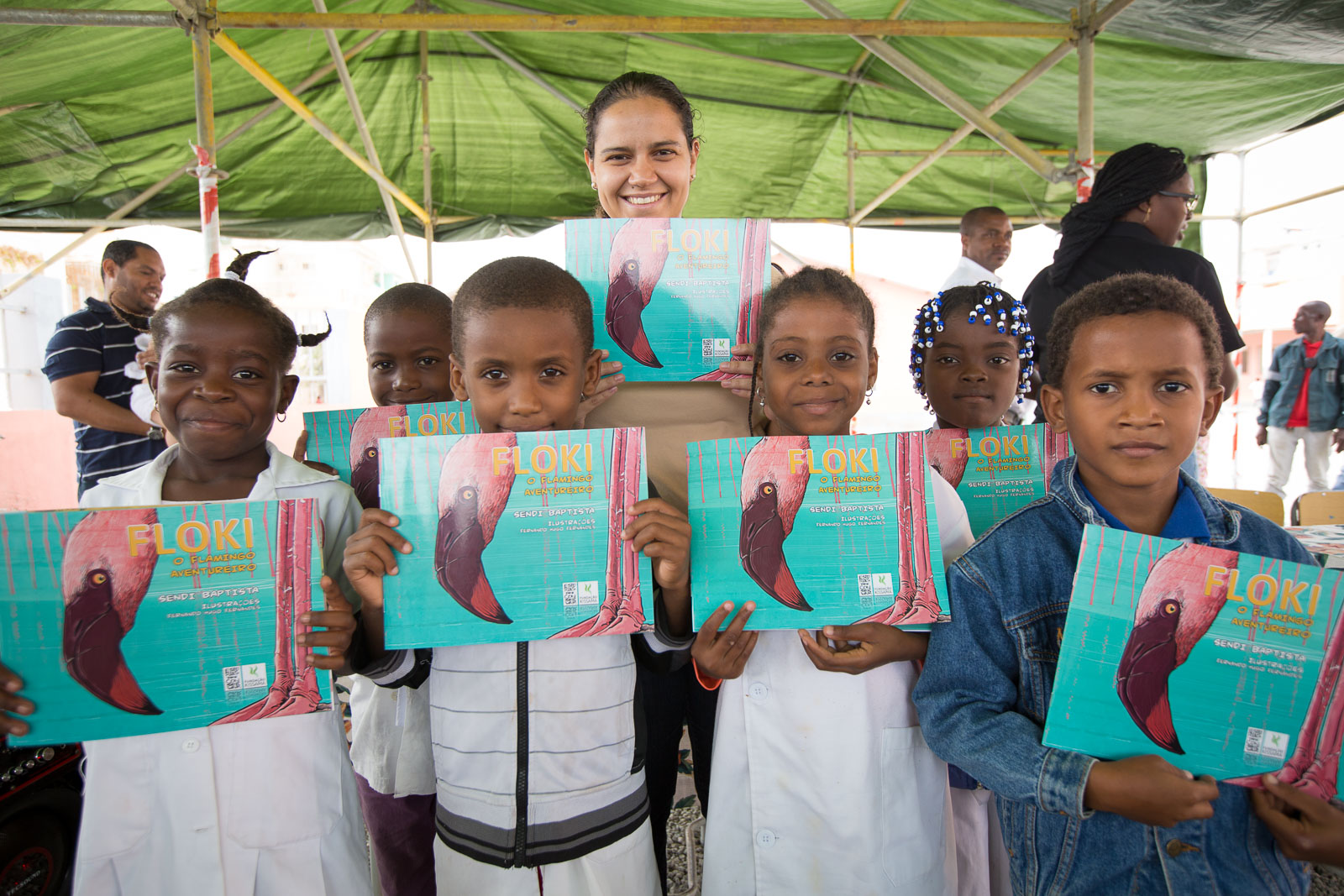Fundação Kissama (FK – Kissama Foundation) is a non-profit nature conservation NGO that has studied and worked on the in situ protection of Angolan biodiversity for more than 20 years. Angola is one of the most diverse countries in Africa, but it is also among the most poorly studied, a consequence of several decades of civil war. Our work includes the preservation of charismatic and threatened species such as the giant sable antelope (Hippotragus niger variani) – the most endangered antelope of the world and Angola’s national symbol, the leatherback turtle (Dermochelys coriacea), and the elusive forest elephant (Loxodonta cyclotis), to name a few.
FK started by working in Quiçama National Park, a one-million hectare park close to Angola’s capital, Luanda. Animals brought from Botswana and South Africa were reintroduced in the park between 2000 and 2001, in a successful operation named “Noah’s Ark”, still effective twenty years later.
In 2003 FK expanded its activities to Cangandala National Park, starting by looking for the Giant Sable Antelope, previously thought to be extinct. After confirming that the sable had survived, several conservation measures were taken to protect it, namely the establishment of the “sable shepherds” (members of the local communities engaged in conservation activities) employed to patrol for poaching, and the creation of a sanctuary for protection and reproduction of the sable. Rooted in this success, FK expanded its scope to Luando Integral Reserve, a much larger and remote protected area where the sable is known to be more abundant. In parallel, we have documented the biodiversity of these areas.
We share a holistic and comprehensive approach to conservation, and do not restrict our work to flagship species. During the last 10 years, we have organized and been part of several biodiversity surveys in remote areas of Angola, especially potential biodiversity hotspots, in which amphibians are recorded, as well as reptiles, birds and mammals. These inventories are a crucial step towards enriching the extremely poor knowledge about Angola’s fauna. As a result, several scientific articles have been published, a herpetological collection is being developed, and research is ongoing.
It is our deep belief that conservation actions are not separate from society or from local communities, who depend heavily on natural resources for their livelihoods. One of FK’s main goals is to encourage the love for nature in the Angolan society by raising awareness. One of the ways to achieve this is by producing learning support materials, many of them aligned with the national curricula.
A collection of books for children about Angola’s incredible fauna was started in 2012 and branded as “Stories to Preserve”. These books illustrate some of the country’s most appealing species, such as the lowland gorilla (Gorilla gorilla gorilla) occurring in the Maiombe rainforest, the country’s national bird – the beautiful red-crested turaco (Tauraco erythrolophus) from the escarpment forests, and the cheetah (Acynonix jubatus) from the Namibe desert. In this way, we not only highlight the species but also the particular and diverse habitats where they occur, as well as the impacts of human activities on them. Eight books have been published so far, with a few titles translated to English, and the next title will be about a very charismatic frog – more on this later!
We also produce board games, hobby books and brochures, hoping that they can be used at the school and community levels. We recently started to produce posters, the first being about the amphibians of Cangandala National Park.
As the only Foundation fully dedicated to biodiversity issues in Angola, we implement a regular internship program that allows early career biologists to improve their skills and to be involved in our initiatives, hoping to establish a cadre of conservationists who will ensure better research and conservation practices for the country.
We consolidate our work through different forms of public outreach, such as storytelling in schools and kindergartens, and participating in fairs, radio and television interviews. By doing so, we hope to engage more and more citizens to share this fascination for the natural world and help protect Angola’s amazing wildlife!
Want to know more? Visit us at:
https://www.fundacaokissama.co.ao
https://www.facebook.com/fundacao.kissama/
By Ninda Baptista, Vladimir Russo & Pedro Vaz Pinto
Fundação Kissama, CIBIO

